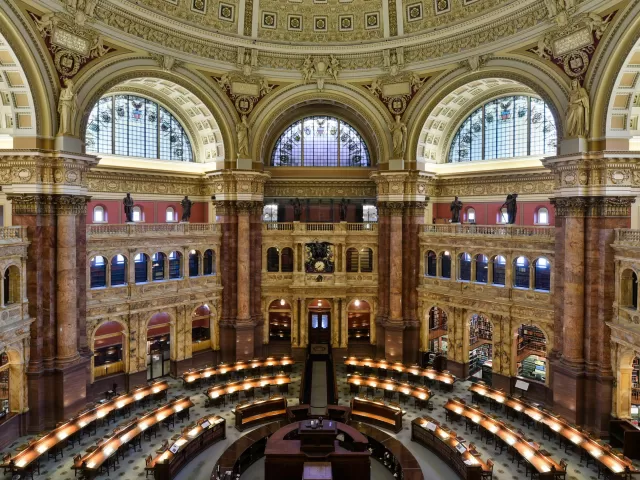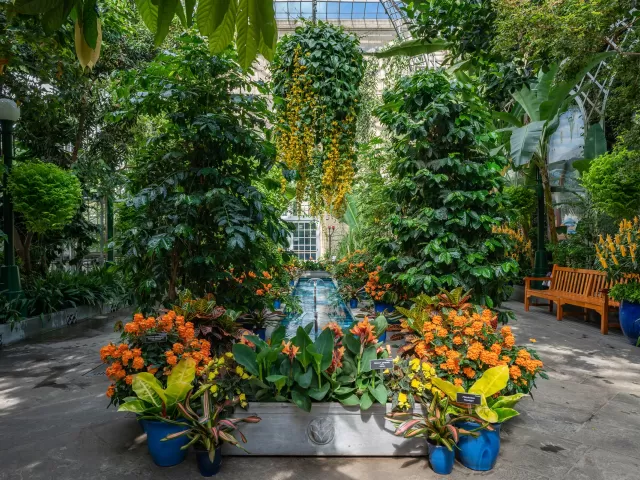The 2024 U.S. Capitol Christmas Tree will arrive Friday, 11/22. Lighting Ceremony 12/3. Details.
Displaying 391 - 420 of 971 Clear
Landing Page
Resources available to Capitol Hill employees including information for Architect of the Capitol jurisdiction superintendent offices, the Capitol flag program, online service requests and more.
Basic page
What can visitors see and do in winter? Trees and Blooms of Interest Several species of trees — whether deciduous or evergreen — offer winter wonder for visitors to enjoy: Witch Hazel ( Hamamelis virginiana) blooms in late winter. American Holly ( Ilex opaca) features glossy green leaves and bright
Basic page
What can visitors see and do in summer? Fountains Although the water features maintained by the Architect of the Capitol (AOC) are not designed for humans to recreate in, several crowd-pleasing pools of cool are located near the U.S. Capitol including the Capitol Reflecting Pool, Senate Park
Basic page
What can visitors see and do in spring? Blooms Abound Washington, D.C.'s famous cherry blossoms herald spring, peaking around late March and early April. More than one million visitors arrive in the District every year, drawn primarily to the cherry blossom trees lining the Tidal Basin. The U.S
Basic page
What can visitors see and do in fall? Leaf Peeping The U.S. Capitol Grounds are a showcase for the many hues of fall, given the number and diversity of large and historic trees comprising the arboretum. The top 10 tree species to seek out for fall color enjoyment are: Bald Cypress, Sugar Maple, Red
Basic page
Our unique portfolio of responsibilities creates models for other communities of practice. AOC is committed to being professionals and leaders in our respective arts continuing, establishing and evolving techniques and processes in our fields. A sampling of these partners is below.
Landing Page
Explore areas of the north side of the U.S. Capitol including Brumidi Corridors, the Senate Chamber, small Senate rotunda and old Senate Chamber.
Landing Page
Explore the U.S. Supreme Court facilities cared for by the Architect of the Capitol.
Landing Page
Explore the U.S. Senate office buildings cared for by the Architect of the Capitol.
Landing Page
Explore the Library of Congress facilities cared for by the Architect of the Capitol.
Landing Page
Explore the U.S. Botanic Garden facilities cared for by the Architect of the Capitol.
Highlight
The memorial to Ulysses S. Grant was dedicated in 1922. In late 2011, the care of the Grant Memorial was transferred from the National Park Service to the Architect of the Capitol (AOC). The bronze elements were restored in 2016 and lamp posts were installed in 2019.
Basic page
Behind the Scenes
Article
The Architect of the Capitol continues to evaluate how best to keep our employees safe. One of the important ways we're advancing our safety efforts is through self-inspections, which are part of the agency's Strategic Plan.
Highlight
The Senate Fountain, a hexagonal granite monolith with high jets of water spouting from its center, is surrounded by six smaller jets on a lower level.
Highlight
The Robert A. Taft Memorial and Carillon is located north of the United States Capitol, on Constitution Avenue between New Jersey Avenue and First Street, N.W. Designed by architect Douglas W. Orr, the memorial consists of a Tennessee marble tower and a 10-foot bronze statue of Senator Taft sculpted
Highlight
The white marble Peace Monument was erected in 1877-1878 to commemorate the naval deaths at sea during the Civil War.
Highlight
Passersby enjoy the play of the jets of water on the majestic, bearded and muscular king of the sea; his sons the tritons blowing conches; the frolicking, horseback-riding Nereids (sea nymphs); and the water-spouting turtles, frogs and sea serpent, placed in front of a grotto-like wall. The tritons
Highlight
The sculptural monument to President James A. Garfield by John Quincy Adams Ward (1830-1910), cast by The Henry-Bonnard Co. of New York, with a pedestal designed by Richard Morris Hunt, is an outstanding example of American sculpture. The monument stands in the circle at First Street, S.W., and
Landing Page
Explore areas of the south side of the U.S. Capitol including Cox Corridors, Hall of Columns, the House Chamber, National Statuary Hall and small House rotunda.
Landing Page
The Architect of the Capitol publishes a wide variety of publications to increase transparency and accountability, including congressional reports and testimony, a report on energy and conservation, and Tholos magazine.
Person
In 1866, at the age of 18, Vinnie Ream was selected by the U.S. Congress to sculpt a memorial statue of President Abraham Lincoln. This made her the first female artist commissioned to create a work of art for the United States government.
Person
Perhaps no sculptor had more influence on the appearance of the U.S. Capitol Building than Thomas Crawford (1814-1857). His sculptures are featured prominently on the exterior of the Capitol, including the Statue of Freedom, which tops the Capitol Dome. Crawford was born in New York City. He studied
Person
John Trumbull was an American painter, diplomat and architect. He is noted for his four large history paintings in the Capitol Rotunda, which depict pivotal moments before, during and after the Revolutionary War. He drew upon his own experiences and the personal acquaintances that he formed during
Person
Artist Allyn Cox created murals in the U.S. Capitol over two decades from 1952 to 1972. He completed and restored the Frieze of American History and restored the Apotheosis of Washington in the Rotunda. He also designed murals for three first-floor corridors in the House wing, now called the Cox
Person
Regarded as the founder of American landscape architecture, Frederick Law Olmsted (1822–1903) is best known for designing the grounds of New York City's Central Park, the U.S. Capitol in Washington, D.C., the Biltmore Estate in North Carolina and the 1893 World's Columbian Exposition in Chicago.
Person
Constantino Brumidi (1805–1880) is best known for the murals he painted in the United States Capitol over a 25-year period, including the Apotheosis of Washington, the Frieze of American History and the walls of the Brumidi Corridors. He also designed and executed murals for several other rooms and
Person
While Thomas U. Walter is credited as the architect of the Capitol Dome, his world-renowned design could not have been accomplished without Montgomery C. Meigs. Captain Montgomery Cunningham Meigs (May 3, 1816 – January 2, 1892) was a career United States Army officer, civil engineer, construction
Person
During his time as Commissioner of Public Buildings, he played a role in extending the U.S. Capitol and building the Capitol Dome. He also oversaw a number of historical events including the Gettysburg Address and the funeral of Abraham Lincoln. Benjamin Brown French was born September 4, 1800, in
Doing Good
Article
The coronavirus inspired many of us to wonder what, if anything, we could do to help when it seemed the needs around us were overwhelming.





















